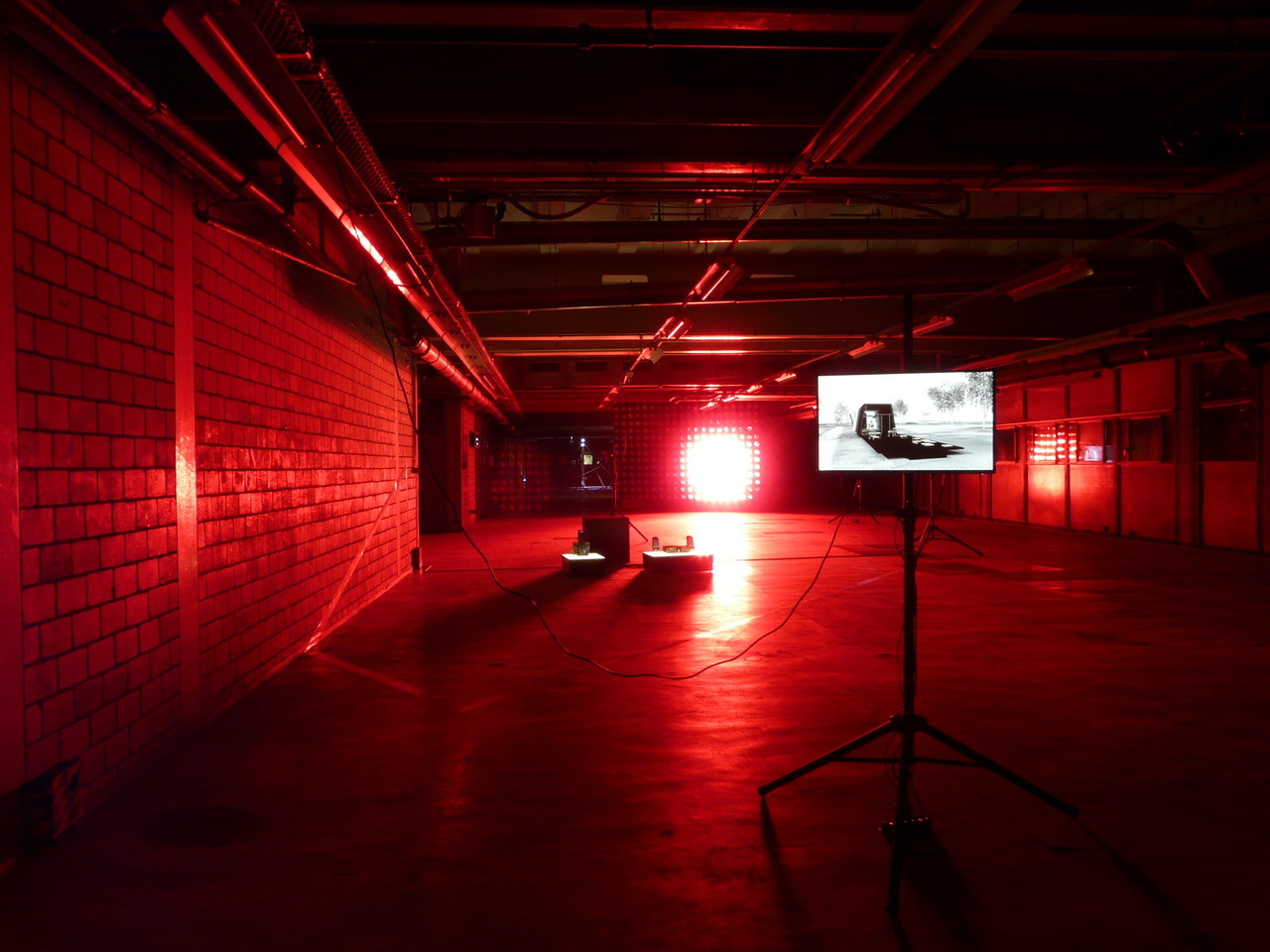Via iiclouds.org
-----
The third workshop we ran in the frame of I&IC with our guest researcher Matthew Plummer-Fernandez (Goldsmiths University) and the 2nd & 3rd year students (Ba) in Media & Interaction Design (ECAL) ended last Friday (| rblg note: on the 21st of Nov.) with interesting results. The workshop focused on small situated computing technologies that could collect, aggregate and/or “manipulate” data in automated ways (bots) and which would certainly need to heavily rely on cloud technologies due to their low storage and computing capacities. So to say “networked data objects” that will soon become very common, thanks to cheap new small computing devices (i.e. Raspberry Pis for diy applications) or sensors (i.e. Arduino, etc.) The title of the workshop was “Botcave”, which objective was explained by Matthew in a previous post.
The choice of this context of work was defined accordingly to our overall research objective, even though we knew that it wouldn’t address directly the “cloud computing” apparatus — something we learned to be a difficult approachduring the second workshop –, but that it would nonetheless question its interfaces and the way we experience the whole service. Especially the evolution of this apparatus through new types of everyday interactions and data generation.

Matthew Plummer-Fernandez (#Algopop) during the final presentation at the end of the research workshop.
Through this workshop, Matthew and the students definitely raised the following points and questions:
1° Small situated technologies that will soon spread everywhere will become heavy users of cloud based computing and data storage, as they have low storage and computing capacities. While they might just use and manipulate existing data (like some of the workshop projects — i.e. #Good vs. #Evil or Moody Printer) they will altogether and mainly also contribute to produce extra large additional quantities of them (i.e. Robinson Miner). Yet, the amount of meaningful data to be “pushed” and “treated” in the cloud remains a big question mark, as there will be (too) huge amounts of such data –Lucien will probably post something later about this subject: “fog computing“–, this might end up with the need for interdisciplinary teams to rethink cloud architectures.
2° Stored data are becoming “alive” or significant only when “manipulated”. It can be done by “analog users” of course, but in general it is now rather operated by rules and algorithms of different sorts (in the frame of this workshop: automated bots). Are these rules “situated” as well and possibly context aware (context intelligent) –i.e.Robinson Miner? Or are they somehow more abstract and located anywhere in the cloud? Both?
3° These “Networked Data Objects” (and soon “Network Data Everything”) will contribute to “babelize” users interactions and interfaces in all directions, paving the way for new types of combinations and experiences (creolization processes) — i.e. The Beast, The Like Hotline, Simon Coins, The Wifi Cracker could be considered as starting phases of such processes–. Cloud interfaces and computing will then become everyday “things” and when at “house”, new domestic objects with which we’ll have totally different interactions (this last point must still be discussed though as domesticity might not exist anymore according to Space Caviar).
Moody Printer – (Alexia Léchot, Benjamin Botros)

Moody Printer remains a basic conceptual proposal at this stage, where a hacked printer, connected to a Raspberry Pi that stays hidden (it would be located inside the printer), has access to weather information. Similarly to human beings, its “mood” can be affected by such inputs following some basic rules (good – bad, hot – cold, sunny – cloudy -rainy, etc.) The automated process then search for Google images according to its defined “mood” (direct link between “mood”, weather conditions and exhaustive list of words) and then autonomously start to print them.
A different kind of printer combined with weather monitoring.
The Beast – (Nicolas Nahornyj)


Top: Nicolas Nahornyj is presenting his project to the assembly. Bottom: the laptop and “the beast”.
The Beast is a device that asks to be fed with money at random times… It is your new laptop companion. To calm it down for a while, you must insert a coin in the slot provided for that purpose. If you don’t comply, not only will it continue to ask for money in a more frequent basis, but it will also randomly pick up an image that lie around on your hard drive, post it on a popular social network (i.e. Facebook, Pinterest, etc.) and then erase this image on your local disk. Slowly, The Beast will remove all images from your hard drive and post them online…
A different kind of slot machine combined with private files stealing.
Robinson – (Anne-Sophie Bazard, Jonas Lacôte, Pierre-Xavier Puissant)


Top: Pierre-Xavier Puissant is looking at the autonomous “minecrafting” of his bot. Bottom: the proposed bot container that take on the idea of cubic construction. It could be placed in your garden, in one of your room, then in your fridge, etc.
Robinson automates the procedural construction of MineCraft environments. To do so, the bot uses local weather information that is monitored by a weather sensor located inside the cubic box, attached to a Raspberry Pi located within the box as well. This sensor is looking for changes in temperature, humidity, etc. that then serve to change the building blocks and rules of constructions inside MineCraft (put your cube inside your fridge and it will start to build icy blocks, put it in a wet environment and it will construct with grass, etc.)
A different kind of thermometer combined with a construction game.
Note: Matthew Plummer-Fernandez also produced two (auto)MineCraft bots during the week of workshop. The first one is building environment according to fluctuations in the course of different market indexes while the second one is trying to build “shapes” to escape this first envirnment. These two bots are downloadable from theGithub repository that was realized during the workshop.
#Good vs. #Evil – (Maxime Castelli)
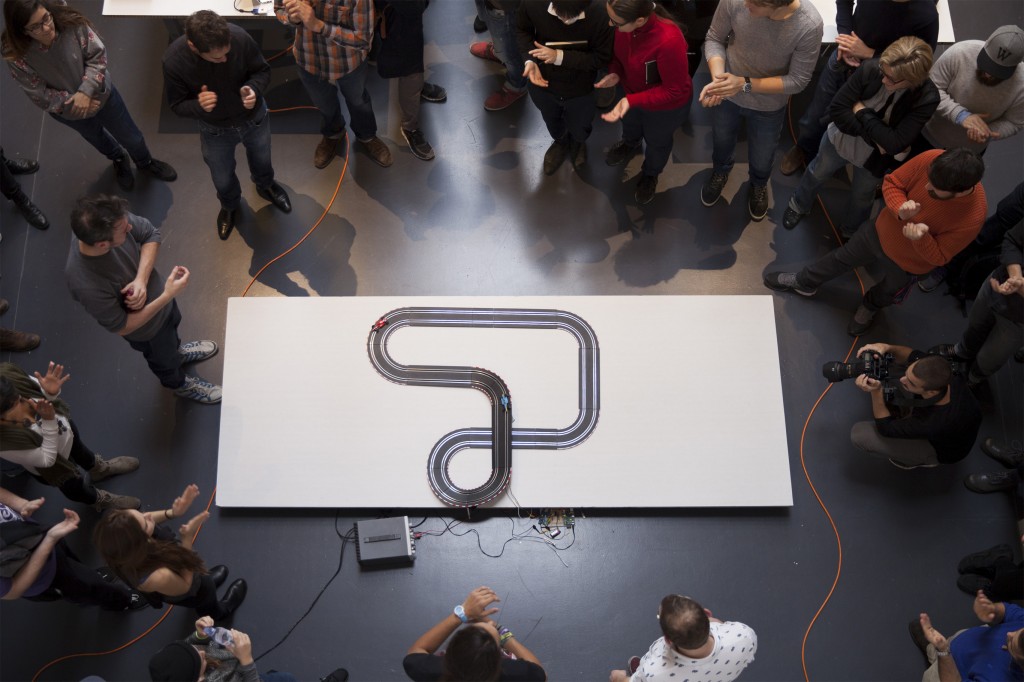

Top: a transformed car racing game. Bottom: a race is going on between two Twitter hashtags, materialized by two cars.
#Good vs. #Evil is a quite straightforward project. It is also a hack of an existing two racing cars game. Yet in this case, the bot is counting iterations of two hashtags on Twitter: #Good and #Evil. At each new iteration of one or the other word, the device gives an electric input to its associated car. The result is a slow and perpetual race car between “good” and “evil” through their online hashtags iterations.
A different kind of data visualization combined with racing cars.
The “Like” Hotline – (Mylène Dreyer, Caroline Buttet, Guillaume Cerdeira)


Top: Caroline Buttet and Mylène Dreyer are explaining their project. The screen of the laptop, which is a Facebook account is beamed on the left outer part of the image. Bottom: Caroline Buttet is using a hacked phone to “like” pages.
The “Like” Hotline is proposing to hack a regular phone and install a hotline bot on it. Connected to its online Facebook account that follows a few personalities and the posts they are making, the bot ask questions to the interlocutor which can then be answered by using the keypad on the phone. After navigating through a few choices, the bot hotline help you like a post on the social network.
A different kind of hotline combined with a social network.
Simoncoin – (Romain Cazier)


Top: Romain Cazier introducing its “coin” project. Bottom: the device combines an old “Simon” memory game with the production of digital coins.
Simoncoin was unfortunately not finished at the end of the week of workshop but was thought out in force details that would be too long to explain in this short presentation. Yet the main idea was to use the game logic of Simon to generate coins. In a parallel to the Bitcoins that are harder and harder to mill, Simon Coins are also more and more difficult to generate due to the game logic.
Another different kind of money combined with a memory game.
The Wifi Cracker – (Bastien Girshig, Martin Hertig)

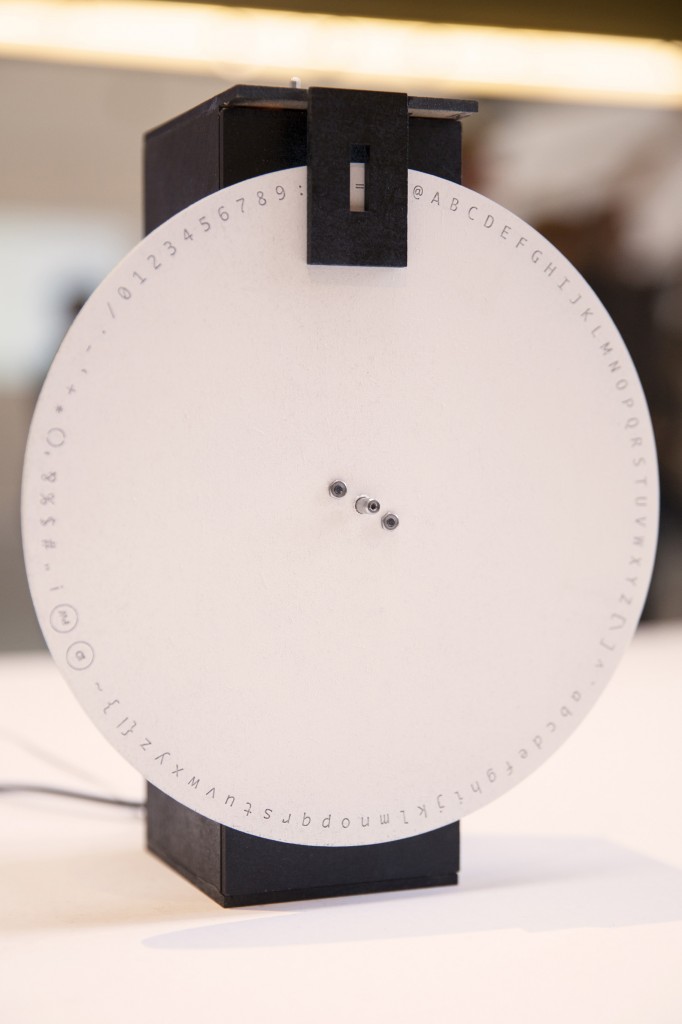

Top: Bastien Girshig and Martin Hertig (left of Matthew Plummer-Fernandez) presenting. Middle and Bottom: the wifi password cracker slowly diplays the letters of the wifi password.
The Wifi Cracker is an object that you can independently leave in a space. It furtively looks a little bit like a clock, but it won’t display the time. Instead, it will look for available wifi networks in the area and start try to find their protected password (Bastien and Martin found a ready made process for that). The bot will test all possible combinations and it will take time. Once the device will have found the working password, it will use its round display to transmit the password. Letter by letter and slowly as well.
A different kind of cookoo clock combined with a password cracker.
Acknowledgments:
Lots of thanks to Matthew Plummer-Fernandez for its involvement and great workshop direction; Lucien Langton for its involvment, technical digging into Raspberry Pis, pictures and documentation; Nicolas Nova and Charles Chalas (from HEAD) so as Christophe Guignard, Christian Babski and Alain Bellet for taking part or helping during the final presentation. A special thanks to the students from ECAL involved in the project and the energy they’ve put into it: Anne-Sophie Bazard, Benjamin Botros, Maxime Castelli, Romain Cazier, Guillaume Cerdeira, Mylène Dreyer, Bastien Girshig, Jonas Lacôte, Alexia Léchot, Nicolas Nahornyj, Pierre-Xavier Puissant.

From left to right: Bastien Girshig, Martin Hertig (The Wifi Cracker project), Nicolas Nova, Matthew Plummer-Fernandez (#Algopop), a “mystery girl”, Christian Babski (in the background), Patrick Keller, Sebastian Vargas, Pierre Xavier-Puissant (Robinson Miner), Alain Bellet and Lucien Langton (taking the pictures…) during the final presentation on Friday.











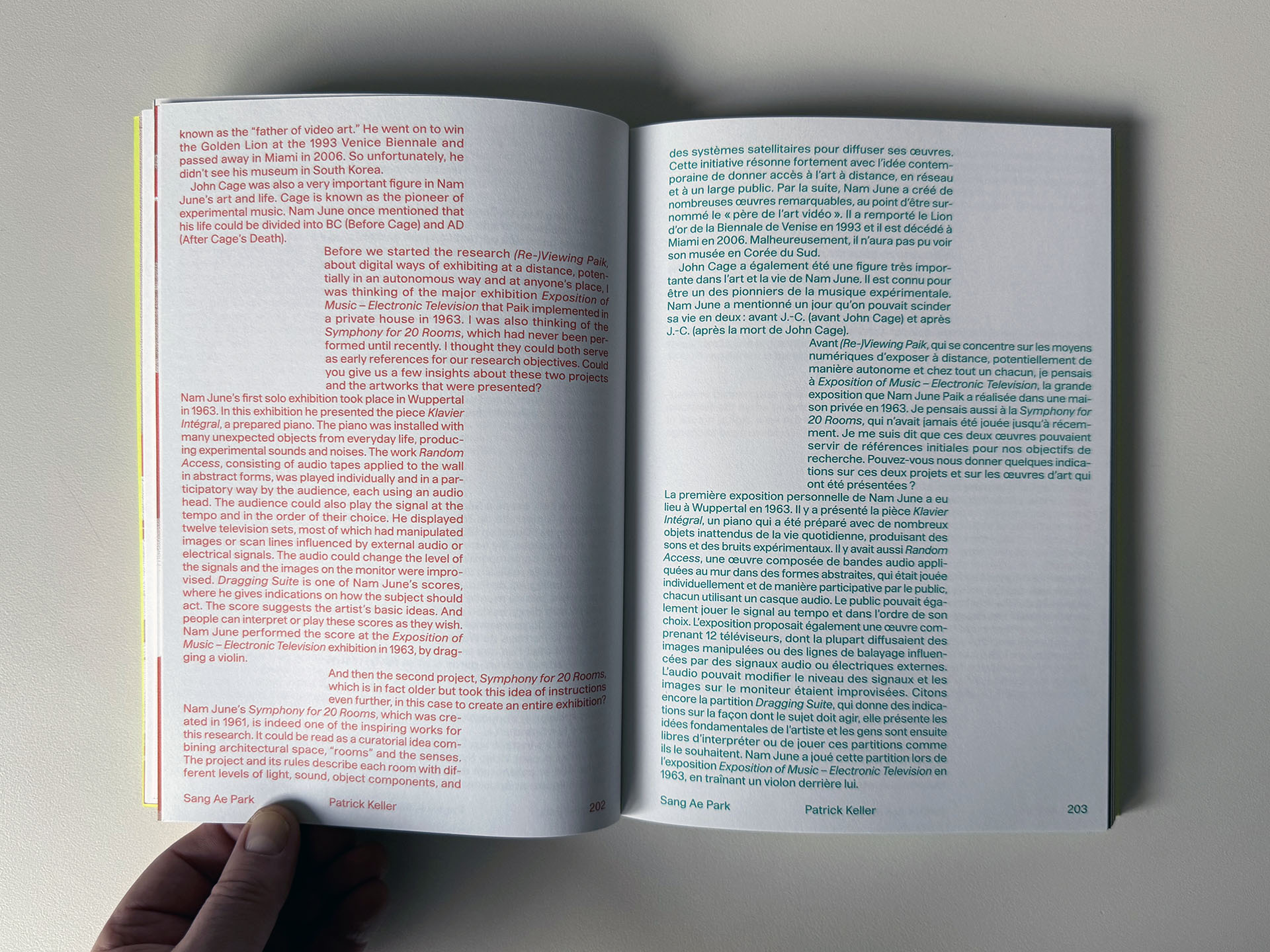




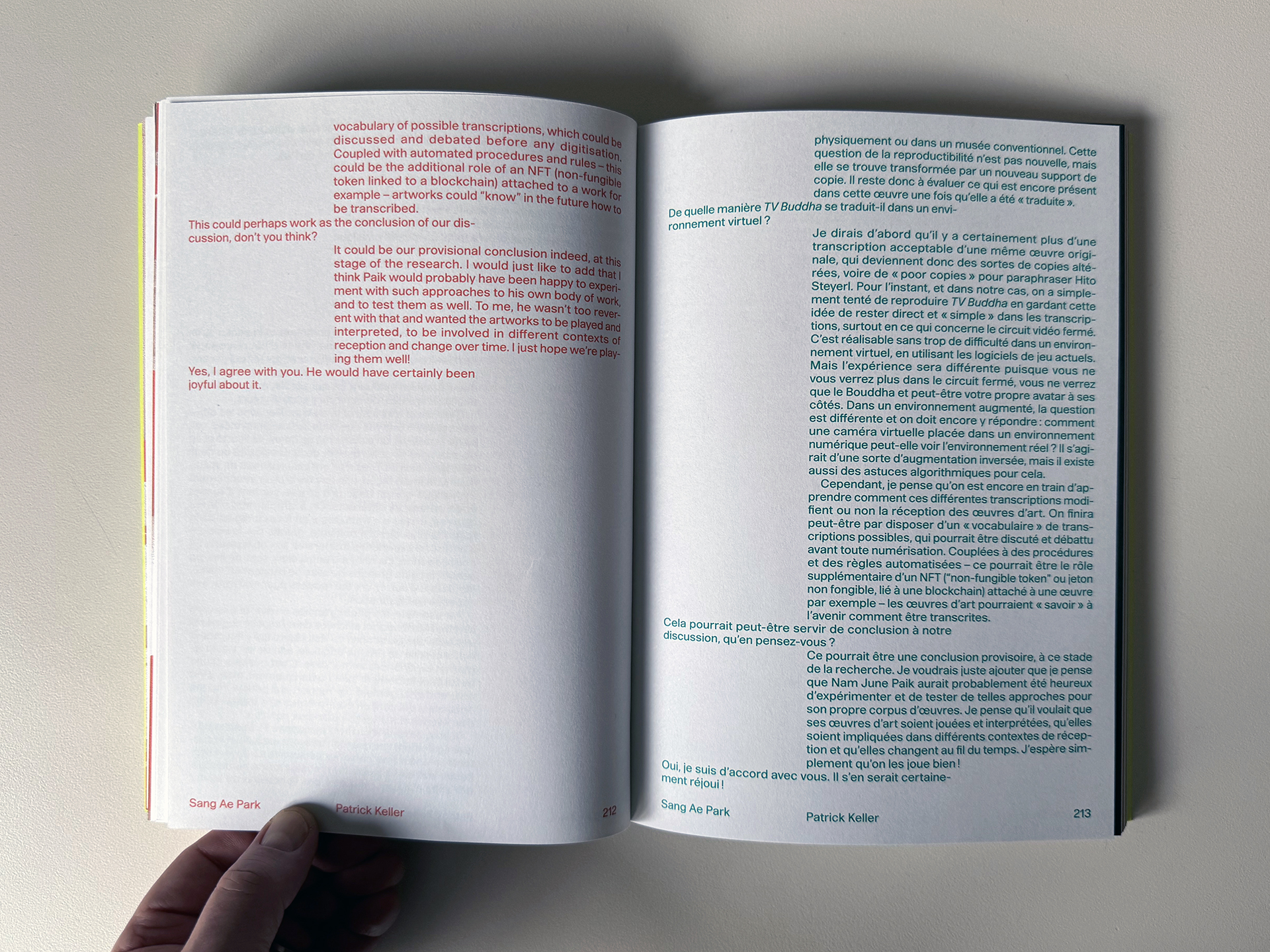







.jpg)





